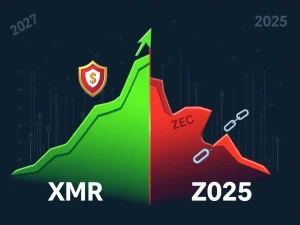Urgent: Why Bitcoin Price Dropped to $107K Despite $1B BTC ETF Inflows

Despite a significant influx of cash into investment vehicles, the Bitcoin price experienced a notable dip. Investors are questioning why Bitcoin fell to $107K even as spot BTC ETF products saw substantial net inflows. Let’s dive into the factors behind this unexpected market movement.
Understanding the Bitcoin Price Drop Amidst Inflows
Bitcoin’s recent price action has puzzled many. On one hand, spot Bitcoin ETFs recorded roughly $1 billion in net inflows over a couple of days. Historically, such inflows are seen as bullish indicators, suggesting increased institutional and retail demand. However, instead of rising, Bitcoin traded down to around $107,400 after failing to sustain levels near $110,500.
This apparent contradiction suggests other powerful forces are influencing the market dynamics. While profit-taking ahead of the weekend is a possibility, especially with Bitcoin close to its all-time high, the scale of the move points to deeper underlying anxieties.
The Impact of a Dormant Wallet Awakening
One event that captured market attention was the movement of 80,009 BTC from a dormant wallet dating back to 2011. Onchain analysis suggests this wallet may belong to an early miner. Such large, old coin movements often trigger speculation and fear among market participants, leading to short-term selling pressure or FUD (Fear, Uncertainty, Doubt).
While concerns about a potential sale are understandable, moving coins from old addresses doesn’t automatically mean they are being sold. Large transfers, especially of this magnitude, are complex. Selling $4.3 billion worth of Bitcoin in a single transaction is highly improbable, even via over-the-counter (OTC) deals. Such a move would likely involve breaking the amount into smaller tranches over time or might be for purposes other than immediate liquidation, such as consolidation or transfer to a custodian. Historically, similar large movements from old wallets have not consistently correlated with major trend reversals, though they can cause temporary market jitters.
Macroeconomic Factors Weighing on Market Analysis
Beyond crypto-specific events, broader macroeconomic factors appear to be significant drivers of recent market weakness. Analysts point to increasing anxiety about the state of the US economy and potential global trade conflicts.
- Fiscal Deficits: The US government’s fiscal outlook, including recent large spending packages and tax cuts, is raising concerns about rising national debt. High debt levels can dampen demand for government bonds and potentially weigh on risk assets like stocks and cryptocurrencies.
- Trade Tariffs: The looming deadline for potential increases in US import tariffs is creating uncertainty. A global trade war could negatively impact economic growth and investor sentiment across various markets.
This economic uncertainty, rather than solely crypto-related news, offers a more compelling explanation for Bitcoin’s struggle to hold higher price levels despite positive inflows into the BTC ETF market. Market analysis suggests that investors are currently prioritizing macroeconomic risks, leading to caution and potential de-risking across portfolios.
Summary
Bitcoin’s recent price dip despite strong ETF inflows highlights the complex interplay of factors influencing the market. While a large dormant wallet movement triggered some fear, the more substantial drivers appear to be concerns over US fiscal health and potential trade wars. These macroeconomic factors are likely causing investors to exercise caution, temporarily overshadowing the bullish signal from spot BTC ETF inflows and putting pressure on the Bitcoin price.









